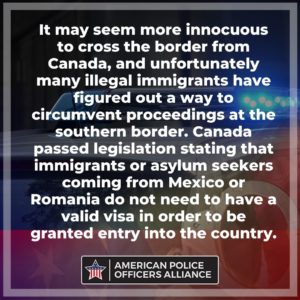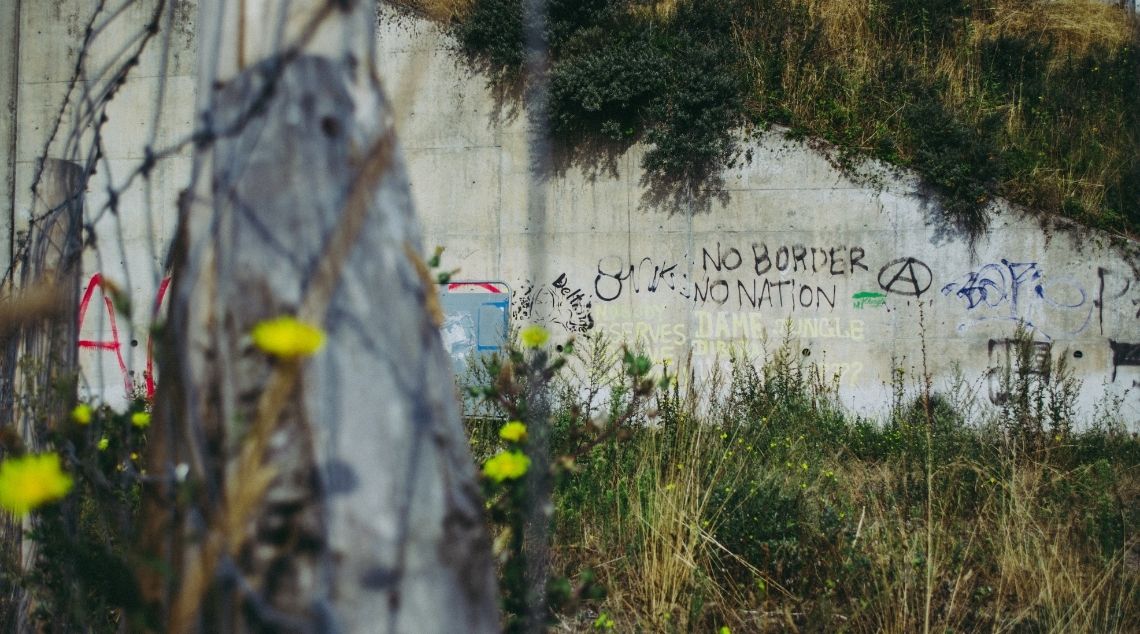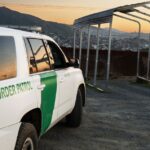While much attention has been directed at the tension afflicting the southern border of the United States that is shared with Mexico, problems are also affecting the country’s borders on the northern end. Border security remains a hot topic of discussion, and no matter what side of the political spectrum individuals may fall on the fact remains that protecting both borders from illicit or illegal activity and crossings is of utmost importance for the safety of all involved.
Even the most casual follower of news headlines knows that much conflict has arisen at the southern border as thousands of asylum seekers from south and central America make their case for refuge in the U.S. Indeed, the rising numbers and corresponding tension at the Mexican border has prompted the sending of reinforcement border security agents, some redirected from their posts at the Canadian border. But this presents another issue, and one that’s gained more steam in recent months: a rise in illegal border crossings at the Canadian edge.
If we are to continue the protection of the United States and its citizens from would be human traffickers and drug dealers, then border security must be a prime focus on both the northern and southern borders. Statistics show a 91 percent increase in illegal border crossings coming from Canada during fiscal year 2018, which is an alarming trend, although the number of apprehensions is much lower than that at the Mexican border due to sheer number differentials. This quiet rise in illegal crossings is alarming due to the listing resources, funding, and staffing that represents the current state of affairs at the U.S.’ northern edge.
It may seem more innocuous to cross the border from Canada, and unfortunately many illegal immigrants have figured out a way to circumvent proceedings at the southern border. Canada passed legislation stating that immigrants or asylum seekers coming from Mexico or Romania do not need to have a valid visa in order to be granted entry into the country. Because of this loophole, some have purchased plane tickets to Canada and then crossed into the U.S. from there because of the decreased risk of apprehension at the border.
Plan to increase protection at the Canadian border
In 2018, the Department of Homeland Security put forth a strategy designed to increase protection at the Canadian border. This Northern Border Strategy is comprised of three goals:
- Enhance border security operations
- Facilitate and safeguard lawful trade and travel
- Promote cross-border resilience

In order to meet these goals, several objectives were outlined in this plan, including the identification of a need for more resources. The Canadian border spans over 5,500 miles, much of which is sparse, bare land that is unmanned. This makes for a challenge for border patrol agents, though much of the illegal apprehensions and crossings have occurred in what is known as the Swanton border sector comprised of upstate New York, Vermont, and New Hampshire.
Indeed, the northern border is often seen as a “de facto safety valve” for immigrants who have entered the country illegally. If they can make it to the northern border, chances are they may be able to find safe harbor in Canada. If they can make it to Canada first, crossing back into the U.S. proves to be less daunting because of the decreased manpower put in place to stop them.
The number of apprehensions at the Canadian border has increased each year. Among these apprehensions are human traffickers and drug dealers moving large amounts of cocaine — both areas of focus that must be monitored and dealt with appropriately in order to prevent a larger scale problem. And while the Trump administration has mostly focused on the tensions at the southern border, attention must also be paid to the increasing numbers in the north.
Commonly named issues that are hindering northern border security from proper enforcement are staffing, resource issues, and lack of funding. In 2017, the Department of Homeland Security determined that the northern border posed much smaller of a threat. They have committed personnel in the following numbers as a part of their Northern Border Strategy: “3,600 U.S. Customs and Border Protection (CBP) Officers, 2,200 U.S. Border Patrol Agents, 180 CBP Agriculture Specialists, 230 CBP Air and Marine personnel, 1,300 U.S. Immigration and Customs Enforcement (ICE) Special Agents, and 8,000 U.S. Coast Guard (USCG).”
Another issue facing the northern border is that of terrorist threats. “The large volume of legitimate travel across the Northern Border and the long stretches of difficult terrain between ports of entry (POEs) provide potential opportunities for individuals who may pose a national security risk to enter the United States undetected,” the Northern Border Strategy document proclaims, although it goes on to say that these threats are still lower than in other areas.
Now, as tensions continue to need support at the Mexican border, more personnel are being shifted to this area in an effort to protect the border. This more aggressive approach should not overshadow the slightly smaller but no less important issues plaguing the north border. Already in 2020, multiple illegal immigrant apprehensions and drug seizures have been noted at the Canadian border, pointing to the fact that this is still a very real issue that must be paid attention to.
Protecting our borders is a big issue as we head into the 2020 presidential election. It is important to remember, however, that the southern border is not the only border that needs protection and policing. With thousands of miles to cover, complicated by topography and weather extremes, the Canadian border must be protected in order to continue the protection of the United States. Giving free rein to pass into the U.S. illegally due to low resources or staffing should not be the way we allow these problems to continue. Only by forming a strong strategy to both staff and manage the work at both borders can we continue to build a stronger, safer United States for all who want to be here safely and legally.
Image Credit: Photo by Radek Homola on Unsplash
The U.S. Immigration and Customs Enforcement, a federal law enforcement agency operating under the Department of Homeland Security, is tasked with enforcing immigration regulations and preventing transnational crime. Often, this work is supplemented with support from local sheriff and police jurisdictions — but at a cost. Read more here.









